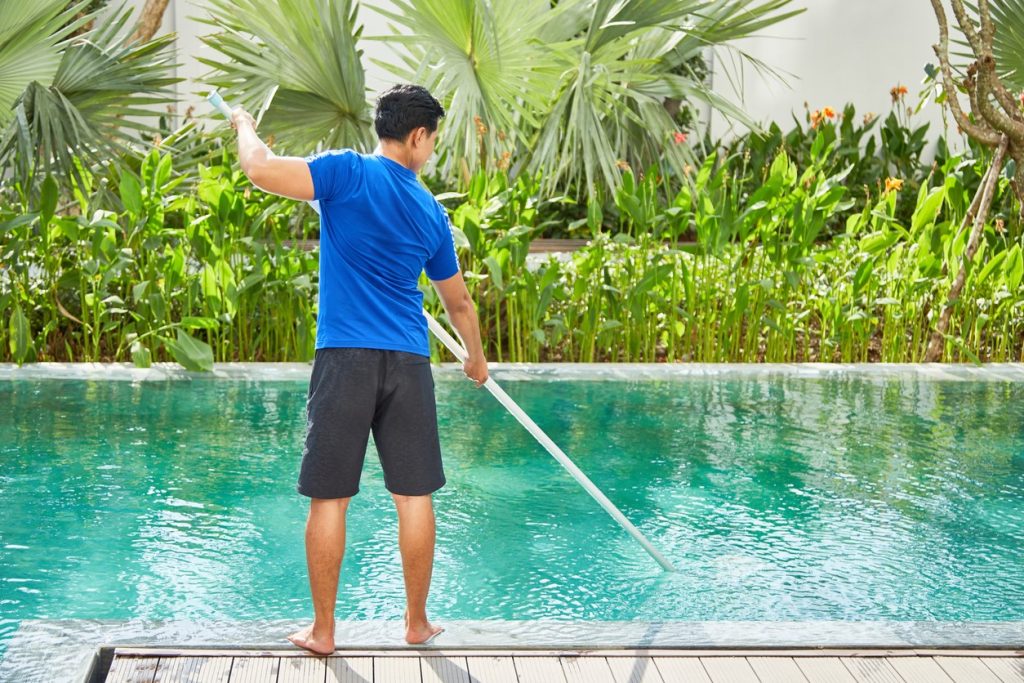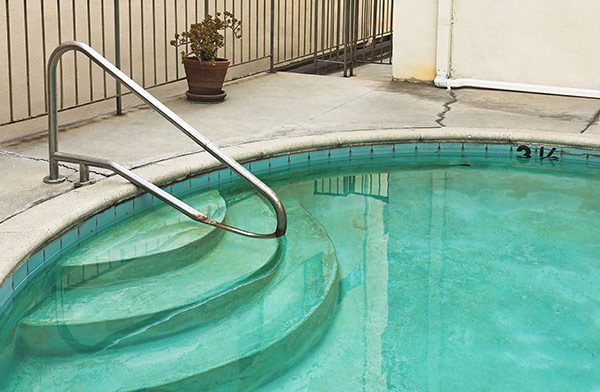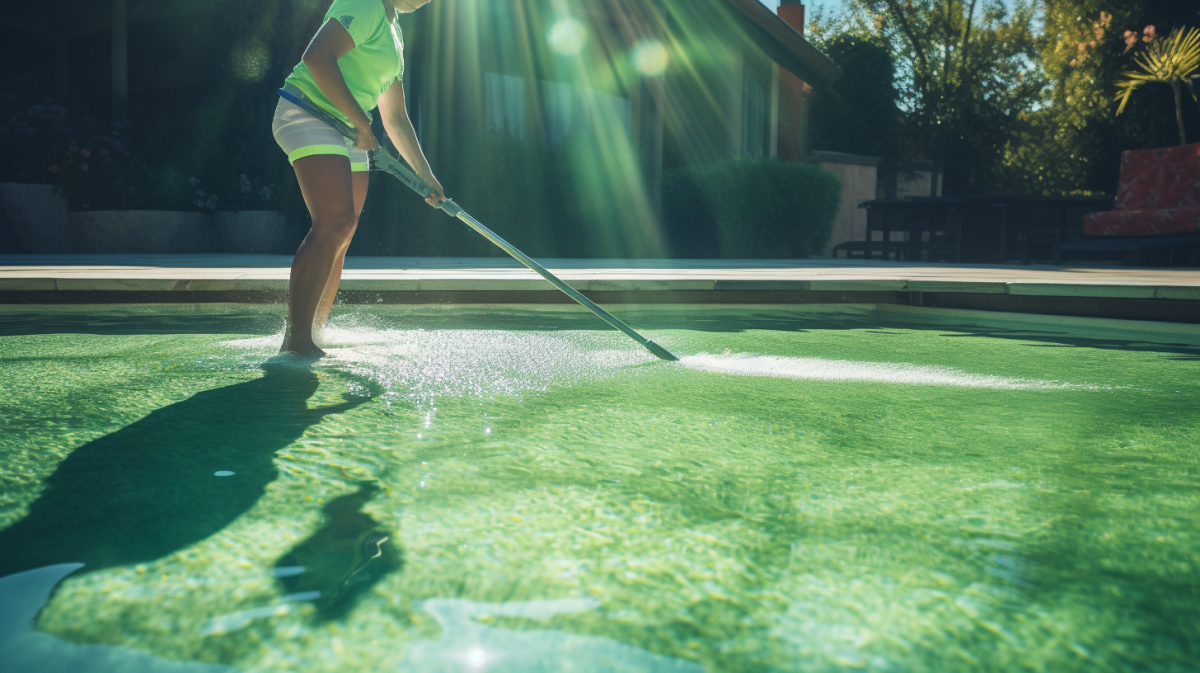A swimming pool offers endless enjoyment and relaxation, but the presence of algae can quickly spoil the experience. Algae growth in pools is a common issue that demands a proactive and knowledgeable approach. This guide will provide you with innovative strategies to prevent and eliminate algae, keeping your pool clean and inviting.
The Algae Challenge
Algae are microscopic organisms that thrive in aquatic environments, especially those exposed to sunlight and rich in nutrients. They can quickly multiply, transforming your pool from a sparkling haven into a green, murky mess. To effectively manage algae, it’s essential to understand the conditions that promote their growth and how to counteract them.

Types of Pool Algae
Green Algae
The most prevalent type, green algae, can turn your pool water cloudy and green, forming slippery layers on surfaces. These algae are free-floating and can spread quickly throughout the pool, particularly if the water’s chemical balance is off. Green algae thrive in pools with poor circulation and inadequate sanitation, making it crucial to maintain consistent maintenance routines.
Yellow Algae
Also known as mustard algae, this type is stubborn and tends to cling to pool walls and floors in shady areas. Yellow algae are more resistant to chlorine compared to green algae and often require specialized algaecides for effective removal. They appear as yellowish or brownish patches and are more common in warm climates, where they can survive even in well-maintained pools.
Black Algae
Characterized by dark, resistant spots, black algae embed into pool surfaces, making them particularly difficult to remove. Black algae have a protective layer that shields them from standard chlorine treatments, necessitating aggressive brushing and potent chemical treatments. They often take root in plaster or concrete surfaces, penetrating deeply and causing persistent problems if not addressed promptly.
Pink Algae
Not true algae but rather bacteria, pink algae create slimy pink or reddish biofilms, often appearing in low-circulation areas. Pink algae are typically found in corners, steps, and behind pool fixtures, thriving in areas with poor water movement. They can be challenging to eliminate without thorough scrubbing and enhanced sanitization efforts.

Proactive Algae Prevention
Regular Pool Maintenance
– Filtration: Ensure your pool’s filtration system is running efficiently. Clean or backwash the filter regularly to maintain optimal performance. A well-functioning filter removes debris and microscopic particles that could serve as nutrients for algae, thus reducing the likelihood of an algae outbreak. Regularly check the pressure gauge and follow the manufacturer’s recommendations for cleaning intervals.
– Circulation: Good water circulation prevents stagnation, reducing algae’s ability to take hold. Run your pool pump for at least 8-12 hours a day, especially during peak swimming season. Stagnant water creates pockets where algae can thrive, so ensure all areas of the pool receive adequate water flow. Consider installing additional return jets or using pool accessories that enhance water movement.
– Brushing: Brush the pool walls and floor weekly to dislodge any algae spores that may be beginning to grow. Pay special attention to corners, steps, and other areas with limited circulation. Regular brushing not only prevents algae but also helps distribute sanitizing chemicals more evenly across pool surfaces, enhancing their effectiveness.
Chemical Balance
– Sanitization: Keep chlorine levels within the recommended range (1-3 ppm) to inhibit algae growth. Consider using a chlorine stabilizer to maintain levels in sunny conditions. Chlorine stabilizers protect chlorine from being broken down by UV rays, ensuring a consistent level of sanitization. Regularly test the water to ensure proper chlorine levels and adjust as necessary.
– pH Levels: Maintain a pH level between 7.2 and 7.6. Alkaline conditions can encourage algae growth. A balanced pH not only prevents algae but also enhances the effectiveness of chlorine. High pH levels can reduce chlorine’s sanitizing power, while low pH can cause skin and eye irritation. Use pH increasers or decreasers to maintain optimal levels.
– Algaecides: Use a preventative algaecide weekly. Choose one suitable for your pool type to provide an extra layer of protection. Algaecides work by disrupting the cellular processes of algae, preventing them from growing and reproducing. Opt for a broad-spectrum algaecide that targets multiple types of algae for comprehensive protection.
Environmental Control
– Debris Management: Skim leaves and debris from the pool surface daily to prevent organic matter from decomposing and feeding algae. Organic debris, such as leaves and insects, can introduce nutrients into the water that promote algae growth. Use a pool skimmer to remove floating debris and empty the skimmer basket regularly to maintain clear water.
– Sunlight Reduction: Use a pool cover when the pool is not in use to limit sunlight exposure, thereby reducing algae’s energy source. Sunlight is a critical factor for algae photosynthesis, so reducing exposure can significantly inhibit their growth. A pool cover also helps retain heat and reduce evaporation, offering additional benefits beyond algae prevention.

Effective Algae Eradication
Shock Treatment
– Superchlorination: “Shocking” the pool with a high dose of chlorine can kill existing algae. Follow the product instructions for the correct dosage based on your pool size. Superchlorination raises chlorine levels temporarily to oxidize and eliminate organic contaminants, including algae. This process also helps to remove chlorine by-products that can cause eye and skin irritation.
– Double Shocking: For severe algae infestations, a second shock treatment may be necessary after 24 hours. Persistent algae may require repeated treatments to ensure complete eradication. Be sure to recheck and balance the water chemistry after shocking to restore safe swimming conditions.
Manual Cleaning
– Brushing: Vigorously brush the pool surfaces to dislodge algae. For black algae, use a stainless steel brush. Brushing disrupts the algae’s protective layers, allowing chlorine and algaecides to penetrate more effectively. Pay special attention to areas where algae are most visible, and use appropriate brushes for different pool surfaces to avoid damage.
– Vacuuming: Manually vacuum the pool to remove dead algae particles after brushing. Use a pool vacuum to thoroughly clean the pool floor and walls, ensuring all dislodged algae and debris are removed. Consider using an automatic pool cleaner for regular maintenance to keep your pool consistently clean.
Chemical Treatments
– Algaecides: Apply a potent algaecide after shocking and brushing. Look for products designed to combat the specific type of algae in your pool. Algaecides provide targeted treatment, attacking algae at the cellular level. Follow the manufacturer’s instructions for dosage and application to maximize effectiveness.
– Flocculants: Use flocculants to clump dead algae together, making it easier to vacuum them out of the pool. Flocculants work by causing small particles to bind together, forming larger clumps that can be easily removed by your pool’s filtration system. This step is particularly useful after shock treatments to clear cloudy water.
Filter Maintenance
– Cleaning: After treating algae, clean or replace your pool filter to remove any remaining algae spores and prevent re-infestation. Algae spores can linger in the filter, potentially reintroducing the problem if not properly addressed. Follow the manufacturer’s guidelines for filter maintenance, including backwashing or replacing filter media as needed.
By adopting a combination of preventative measures and effective treatment strategies, you can keep algae at bay and ensure your pool remains a clean, inviting space for swimming and relaxation. Regular maintenance, proper chemical balance, and vigilant cleaning are key to maintaining an algae-free pool. Embrace these practices, and you’ll enjoy a sparkling, healthy pool all season long. Consistency in maintenance routines, along with timely intervention at the first signs of algae, will help you avoid major infestations and enjoy your pool without interruption. Whether you’re a new pool owner or a seasoned veteran, staying informed and proactive is the best way to ensure a beautiful, algae-free swimming experience.

